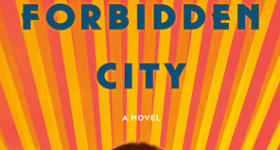“Every act of communication is a miracle of translation.”
Before Ken Liu compiled A Paper Menagerie and Other Stories, he was known for his translation of The Three-Body Problem by Liu Cixin, which earned him a Hugo Award for Best Novel, and also the fantasy novel, The Grace of Kings: Book One of the Dandelion Dynasty. Those familiar with popular Chinese history will find the conflicts and characters completely recognizable in Kings, but no less compelling for Liu’s ability to tell a good story.
Solid and vivid storytelling is a staple in each and every one of the fifteen shorts found in this collection. For over a decade, Liu has published his shorts consistently and prolifically all the while sustaining day-jobs within the fields of tech and law. It’s no surprise, then, that many of his stories are speculative fiction about technological growth and socio-political structures. In “The Perfect Match,” he introduces a creepy, dystopic world where a company similar to Google serves as a Panopticon that takes over the world. It’s a captivating tale that hits too close to home and a reminder to not share usage and diagnostics information no matter how much we want to improve browser performance. “Simulacrum” and “The Regular” not only explore philosophical underpinnings of unbridled innovation, but reveal the impartiality of an author willing to explore all sides of debates. For example, within the context of innovation paradoxes, Liu tackles the pragmatic and idealistic binary as deftly as tech’s potential to impede human agency. As Liu takes us through his worlds that challenge us to think a bit more about our present existence, we are treated to gems that arise organically from the debating: “Information doesn’t want to be free. It’s valuable and wants to earn. And its existence doesn’t free anyone; possessing it, however, can do the opposite.” Or the possessor (reader) may act differently, because ultimately, Liu is not pessimistic for pessimism’s sake.
In many of his stories, Liu’s meticulousness of research and attention to political and historical details are balanced by a lyrical and image-driven style, with fully fleshed out characters dotting the landscape. “The Literomancer” takes place in Taiwan and covers its first two decades of martial law under Kuomingtang rule. Using the Chinese written character for lamb as an anchor, Liu weaves a heart-wrenching story that pleads for an optimistic future between clashing sides on the island. For those of us habituated to the events of this time period, the characters are relatable, the details are fairly accurate and the story’s lyrical and image-driven style is a tool to soften political sensitivities surrounding the conflicts. The book contains several more stories in this collection are historically relevant and emotionally jarring references to actual events. Readers who are versed in the ancient Chinese stories of Guan Yu during the Three Kingdoms Period, tales of the Monkey King, cultures of East Asia, as well as Japanese brutality during World War II will connect deeply with characters from “All the Flavors,” “The Litigation Master,” “A Brief History” and “The Man Who Ended History.”

Ken Liu
The misuse of law at the hands of the rich and powerful are themes in the final stories. Politics of greed and the fallible human’s inability to empathize at a large scale is another theme. The reluctant hero is another theme. With various renditions of the immigrant tale, Liu ponders the meaning of home and how and when and why people decide on place-making. “A Brief History of the Trans-Pacific Tunnel” explores an alternative history wherein Japan decides not to wage war on Asia during WWII and instead, collaborates with China and the United States to build a tunnel under the Pacific Ocean connecting two continents together. True to an emerging pattern late in the book, there is a cost to idealism, for where there is beauty and wonder, horror and death will follow. The hero in this journey goes from believing that it is better to be quiet about injustices, to performing an act of counter-silence in his own small way. This story is a good transition to the next and final story about a similar man.
It was not until the “The Man Who Ended History” when I began to see the logic of Liu’s story order. Perhaps the author did not intend this, but at the heart of his writings is an urgency to remember, an urgency to tell true enough stories lest we are doomed to fail humanity; fail the bodies of our fellow species again and again. Thus the placement of the final story appears as a warning to his readers. “The Man” is about a mostly unknown history of Japanese biological and medical experimentation on Chinese and Korean civilians during WWII. The protagonist attempting to find and expose historical truth through advanced technology is reminiscent of the real life author, Iris Chang who worked tirelessly to uncover what truly happened in Nanking during the Japanese invasion.
“Every moment, as we walk on this earth, we are watched and judged by the eyes of the universe…We must bear witness and speak for those who cannot speak. We have only one chance to get it right.” A commitment to truth, a commitment to remember. Therein lies the heart of Liu’s project done with graceful and vivid imagination -- a tiger made of paper can hold a story and change our very notion of why we love and where we belong.










Comments